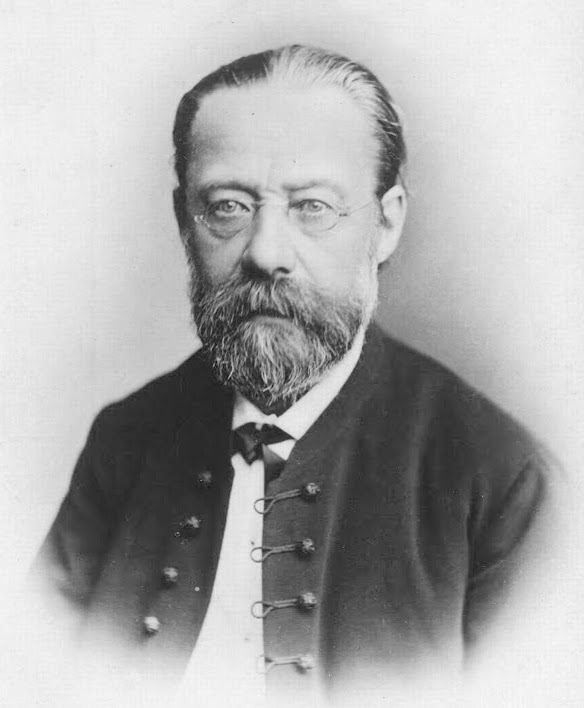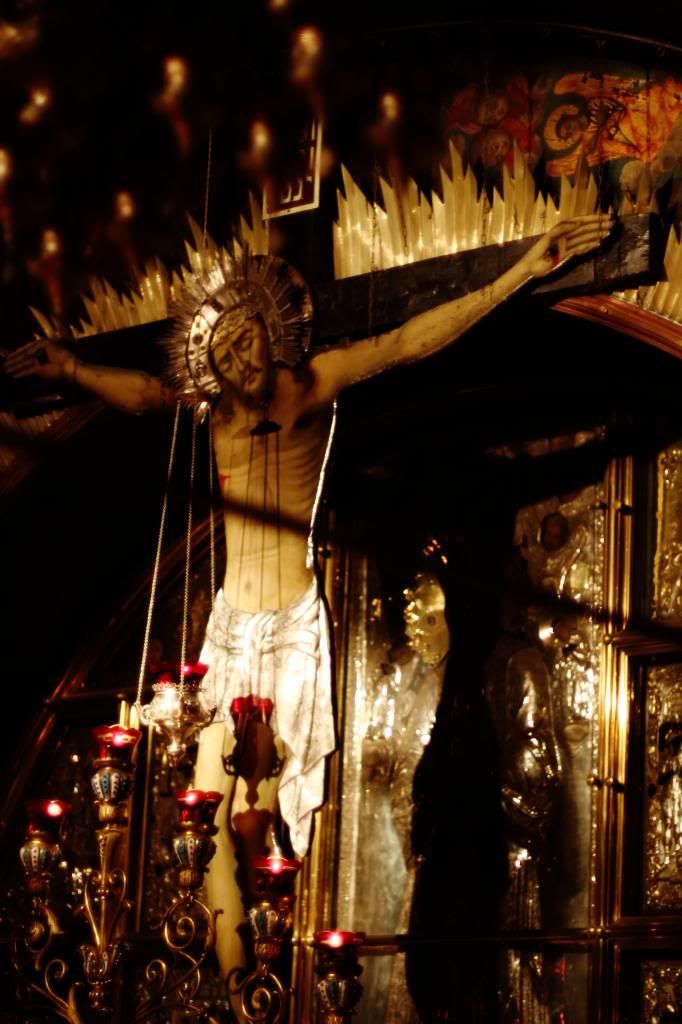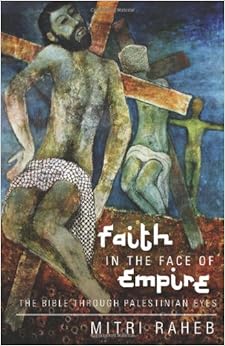Some new music for you. Feel free to download it.
I used a couple of sounds from the Freesound Project:
Ambient Drum + Percussion Loop
Synth Sounds
Pages
▼
Wednesday, April 30, 2014
Biblical Limericks: To the Worthless Shepherd
Woe, and woe to the worthless shepherd,
you who would leave your flock, hear this word:
because you’ve gone awry,
to gouge out your right eye,
and slash your right arm, I’ll send a sword!
Zechariah 11: 17
More Anomalies A – Z: Baalberith
The children of Israel made Baalberith their god. Judges 9: 33
Near the Terebinth
groves of Morah
where wandering Abram pitched his tents,
where Yahweh confirmed and cut
a covenant with his servant
Rises the tower of Baalberith,
the Master of the Mark
god of contracts,
and Lord of the Knife.
There he is worshipped
by stiff men – strong and undeterred.
The men of Shechem stand erect,
ready to do as their lord commands.
They stroke the idol
as they pass
before his altar;
they stroke the idol for a blessing.
From the rabbinic writings in the Mishnah:
where wandering Abram pitched his tents,
where Yahweh confirmed and cut
a covenant with his servant
Rises the tower of Baalberith,
the Master of the Mark
god of contracts,
and Lord of the Knife.
There he is worshipped
by stiff men – strong and undeterred.
The men of Shechem stand erect,
ready to do as their lord commands.
They stroke the idol
as they pass
before his altar;
they stroke the idol for a blessing.
From the rabbinic writings in the Mishnah:
``[There was an idol] in
the shape of the head of a penis, and there was one in the shape of a bean.`` Now what is the
scriptural basis [for this statement about the kind of idol just now described
in the shape of a penis]? ``And they made as their god the master of the mark
of circumcision [Baal berith]`` (Judg.8.33). [This indicates that there can be an
idol in the stated shape.]
'Ab. Zarah iii.43a
For more of the Anomalies A - Z click here.
'Ab. Zarah iii.43a
For more of the Anomalies A - Z click here.
Tuesday, April 29, 2014
Trees with Jim
I spent part of this morning with my friend Jim. We share an interest in photography so we went out, despite the drizzle and rain, to take a few pictures of the trees that are blooming around town, he with his Minolta 35mm and me with my Canon.
We talked, or rather he talked - conversations with Jim are pretty much one sided - about cameras, coin and stamp collecting, motorcycle repair, noisy neighbors, roofing work, the situation in the Ukraine, drug busts, the benefits of being in a union, ... ... ...
And I got a couple of nice pictures, so it was an enjoyable morning.The first two are Eastern Redbud and the last is Cherry (I think. I am not a trained dendrologist.)



We talked, or rather he talked - conversations with Jim are pretty much one sided - about cameras, coin and stamp collecting, motorcycle repair, noisy neighbors, roofing work, the situation in the Ukraine, drug busts, the benefits of being in a union, ... ... ...
And I got a couple of nice pictures, so it was an enjoyable morning.The first two are Eastern Redbud and the last is Cherry (I think. I am not a trained dendrologist.)



Shiny Happy People in Love with the Devil – A Sermon by Dr. Drusba
The following is a partial transcript of a sermon, recorded on an audio cassette in 1994, by Dr. Drusba:
My brother and my sisters, you have heard me say it before and you will, praise Jesus, hear me say it again: the devil is in the rock and roll music. That’s right. You heard it. The devil, the devil is in the rock and roll music. Now preachers, righteous preachers have been declaring this since the beginning, since Elvis the Pelvis shook his hips on the Ed Sullivan show, preachers have been telling you that rock music is satanically inspired and recorded under the influence of demons.
Ah but some of you still don’t believe me. Why, my very own son … I’m sorry… you know I love that boy. I pray for that boy. That he’ll see the light. My very own son has been caught up in the devil’s rock and roll snares.
This very morning I caught him listening to a song by the band R.E.M. – and let me just say this here, you can tell a lot about these people by the name they choose for themselves. R. E. M. – you know what that stands for, right? It’s an acronym for Rapid. Eye. Movement. Referring to a dream state. These guys want you to think that life is just a dream – that nothing is real, that God is not real.
Anyway, I caught my son listening to music by this band, R.E.M. and the name of the song is Shiny Happy People. And some of you are thinking, ‘why what could be so bad about that? Shiny Happy People? Why, that sounds positive. That sounds good.
But, my dear friends, this is how the devil tricks you. This is how he snares you, by presenting something that looks good. That apple that he gave to Eve looked good. The Bible says that “it was a delight to the eyes.” That’s how he works. He shows you something that looks good on the outside, but on the inside is full of poison and death.
This song, Shiny, Happy People talks about these shiny happy people holding hands, and laughing. You see, they’re carefree, they’re happy, they’re in love. But I tell you they’re in love with the devil. This song, which sounds so bright and cheerful, is, in fact, a love song for the ancient Middle Eastern goddess, Asherah.
That name sounds
familiar, doesn’t it? Yes, sir! The very
same Asherah that’s mentioned over and over and over again the pages of the
bible. The Old Testament prophets railed
against the kings for setting up Asherah poles on the high places – but here in
America we sing love songs to her. No
wonder our country is in such decay! No wonder we have so many problems with
our teens and young adults. They’re
singing love songs to Asherah!
Now, my son, you know he likes to argue with me. He likes to debate. He tried to say, ‘But dad… Look at the lyrics. There’s no mention of Asherah in this song at all.’ And he’s right. The name Asherah is not spoken, is not sung….not in English. No… the devil’s too crafty, too tricky to come right out with it. The serpent is the most subtle of the creatures. That’s why you have to be aware. You have to have your eyes wide open.
Listen people! The name Asherah – according to the Dictionary of Deities and Demons in the Bible – is derived from a couple of different words. Get this: In South Arabic the word atar - from which Asherah is derived – the South Arabic word atar means “shining.” Yes. Yes. And there’s more. The Hebrew word ‘asher means “happy.”
Oh, you see it now, don’t you? That fertility goddess of the ancient Middle East was the shining goddess, the happy goddess. And her people? Who were they? They were shiny, happy people. Why are they so happy? What have they to be so happy about? They’re singing about a false god, a demon. They ‘re singing about death.
Listen again to the lyrics now that you know what’s really going on. The singer says, “Throw your love around, love me, love me. Take it into town, happy, happy. Put it in the ground where the flowers grow.
Now, my son, you know he likes to argue with me. He likes to debate. He tried to say, ‘But dad… Look at the lyrics. There’s no mention of Asherah in this song at all.’ And he’s right. The name Asherah is not spoken, is not sung….not in English. No… the devil’s too crafty, too tricky to come right out with it. The serpent is the most subtle of the creatures. That’s why you have to be aware. You have to have your eyes wide open.
Listen people! The name Asherah – according to the Dictionary of Deities and Demons in the Bible – is derived from a couple of different words. Get this: In South Arabic the word atar - from which Asherah is derived – the South Arabic word atar means “shining.” Yes. Yes. And there’s more. The Hebrew word ‘asher means “happy.”
Oh, you see it now, don’t you? That fertility goddess of the ancient Middle East was the shining goddess, the happy goddess. And her people? Who were they? They were shiny, happy people. Why are they so happy? What have they to be so happy about? They’re singing about a false god, a demon. They ‘re singing about death.
Listen again to the lyrics now that you know what’s really going on. The singer says, “Throw your love around, love me, love me. Take it into town, happy, happy. Put it in the ground where the flowers grow.
Gold and silver shine…”
“Throw your love
around.” Why it’s a call for promiscuity
and so-called “free love” And... “Put it in the ground” – this song is about
death. Being buried in the ground where the flowers grow. Pushing up the daisies, we used to say. You see, the devil doesn’t care about
you. He’s laughing at you. He knows that cheap sex and one night stands
leads to venereal diseases and AIDs and death.
And he puts that in the song. But it sounds so bright and cheerful you
never notice. And the devil is there
laughing at you because you’re too dumb or to blind to see what he’s doing to
you.”
I snatched that CD player diskman out of my son’s hands and… [The recording is cut off at this point.]
I snatched that CD player diskman out of my son’s hands and… [The recording is cut off at this point.]
More Anomalies A – Z: Abaddon
“Hell and Abaddon are never full…” Proverbs 27: 20
After the heralding angels blow
those silver dies irae trumpets
the depths unfathomed will be opened
and I will ascend with insectoid servants in my train.
The stars will fall from heaven and I will rise;
with furnace smoke I will strike the sun
and smear the bleary moon.
The crucible is for
silver, the furnace is for gold,
but I will lay you down in fire and in snow;
let wicked worms breed within your skin
far removed from Shekhinah light.
but I will lay you down in fire and in snow;
let wicked worms breed within your skin
far removed from Shekhinah light.
I am King of the Abyss.
I am the champion of Hell,
Apollyon, the first of woes.
For more of the Anomalies A - Z check here.
I am the champion of Hell,
Apollyon, the first of woes.
For more of the Anomalies A - Z check here.
Monday, April 28, 2014
You Can't See the Wind
It blows wherever it pleases. You hear its sound, but ... (John 3:8)
This photograph (and several others) are available for purchase. You get some fine art - and the Salvation Army of Newton, Iowa gets the money.
You Can't See the Wind by Jeff Carter on 500px

This photograph (and several others) are available for purchase. You get some fine art - and the Salvation Army of Newton, Iowa gets the money.
You Can't See the Wind by Jeff Carter on 500px

Pro Tip #2: Don't Confuse These Two, Either
It is easy to confuse them; many novices do. But don't be overly distressed. With practice you will soon be able to distinguish between smetana which is a central and eastern European sour cream, and Bedřich Smetana, the Czech composer.
Pro Tip #1 - Don't Confuse These Two
Sunday, April 27, 2014
Powerpoint Slides for Everyone - 2014 - Week 19
Here it is again - the weekly free background image - use it in Powerpoint (or similar presentation programs) or don't... use it how you will and where you will. I only ask that you share it freely and that you tell others that you found it here.
For those who are interested - the photograph was taken through the bottom of a drinking glass.

For those who are interested - the photograph was taken through the bottom of a drinking glass.

Highlights from Youth Councils - Western Division - 2014
A few (and only a few) of the highlights from this weekend:
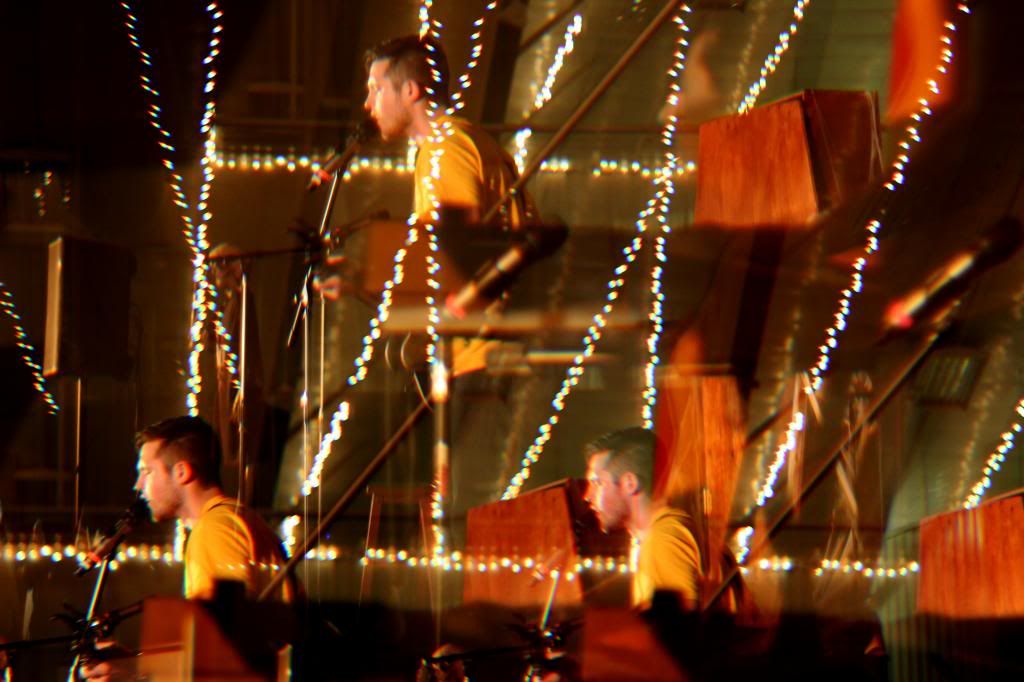

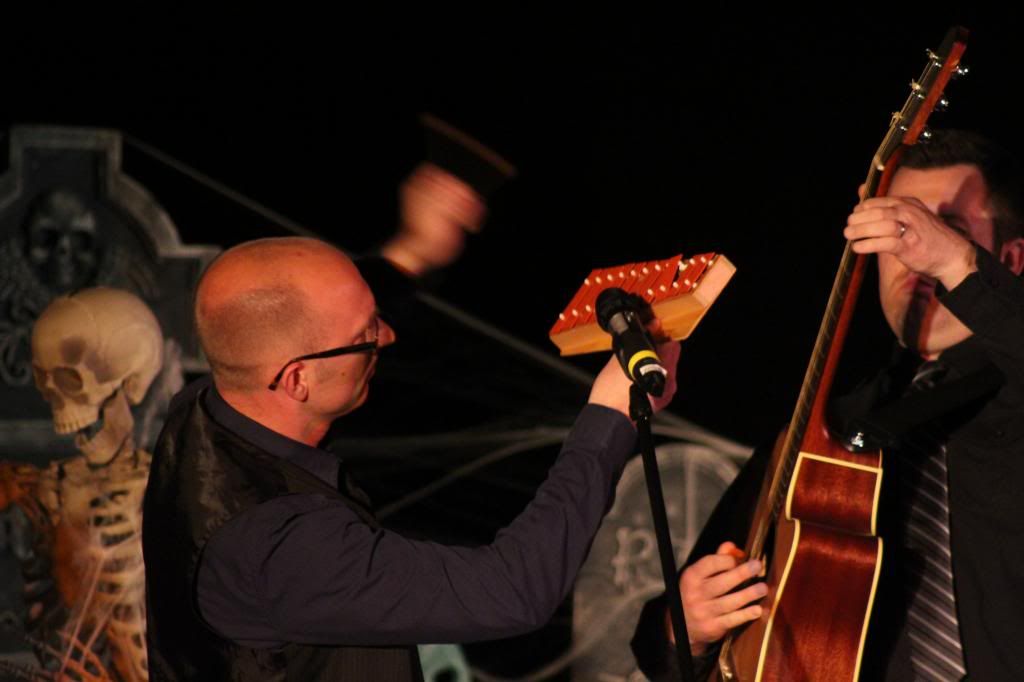
Dave and Brian "Rockenspiel"
These guys are good. (Like - they've been on NPR good...) You want to purchase their album and hire them to perform at your event, wedding, bar mitzvah, christmas tea....
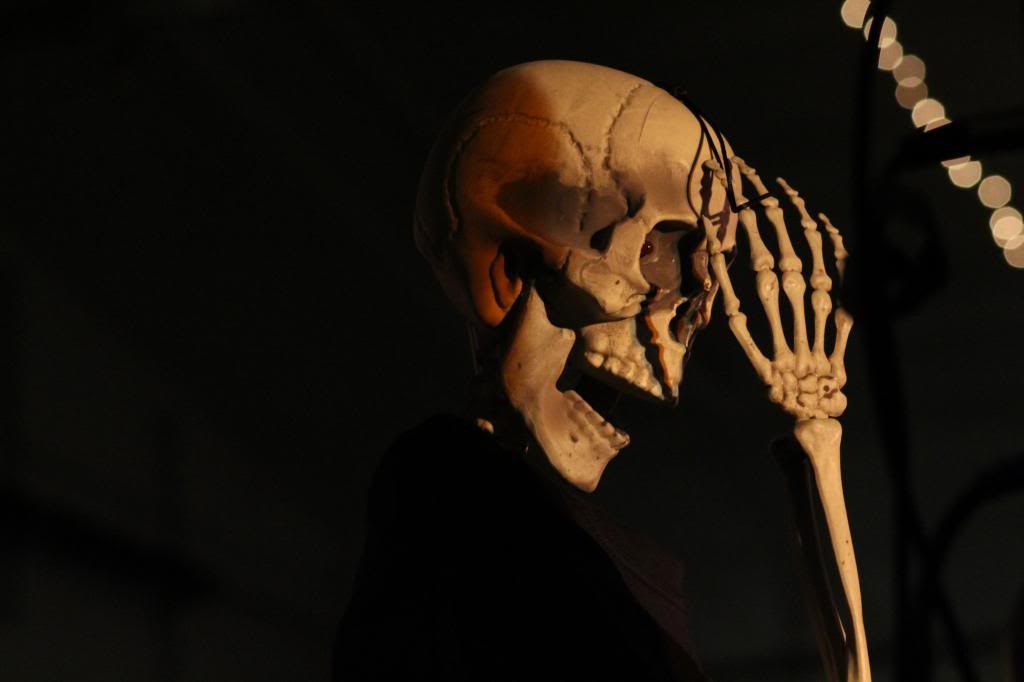
Biblical Limericks: Mistaken Identity
Paul and Barnabas fled from abuse -
went to Lystra, set the gospel loose,
Paul healed a man born lame
and people thought his name
was Hermes, and called Barnabas Zeus.
Acts 14: 5 - 13
Saturday, April 26, 2014
Not (Always) a Slacker
I'm spending the weekend with my 15 year old daughter and a bunch of other teenagers and young adults from Salvation Army corps in Iowa, Nebraska, and South Dakota. It's one of those youth rallies - with loud music (if it's too loud, you're too old...), motivational speakers (pretending to to be bible preachers) and those inflatable amusement games.
And service.
The teens and young adults gathered here in Norfolk, NE spent this afternoon doing various service projects for the community. My group of kids took care of the yard of an elderly woman who has difficulty getting around these days. We raked the yard, pulled weeds from the garden, trimmed the bushes, planted flowers...
Earlier my daughter said to me, "I'm only a slacker when I don't care." But I know she does. She's not (always) a slacker.

And service.
The teens and young adults gathered here in Norfolk, NE spent this afternoon doing various service projects for the community. My group of kids took care of the yard of an elderly woman who has difficulty getting around these days. We raked the yard, pulled weeds from the garden, trimmed the bushes, planted flowers...
Earlier my daughter said to me, "I'm only a slacker when I don't care." But I know she does. She's not (always) a slacker.

I'm a Good Parent Because Existentialism

Today I feel like a successful parent. I feel like - whatever else might go wrong, whatever else I’ve already screwed up getting here – today I feel like I’ve done something right, because my 15 year old daughter is reading the Hitchhiker’s Guide to the Galaxy books by Douglas Adams. This seriously pleases me.
Now, I have been told that maybe these books aren’t appropriate for a 15 year
old, for a Christian, for a pastor’s child to read. They were written by an atheist, express a
mockery of religion and generally promote an existentialist philosophy. But none of that bothers me.
All of that may be true but 1) I read them when I was 14 – 15 and I’ve turned out okay.[i] 2) I’m glad she’s reading intelligent books filled with complex ideas rather than Twilight and other similar YA drivel. 3) I think that a healthy dose of existentialist doubt would be a good thing for the church.
But maybe that’s just calculated existential angst…
All of that may be true but 1) I read them when I was 14 – 15 and I’ve turned out okay.[i] 2) I’m glad she’s reading intelligent books filled with complex ideas rather than Twilight and other similar YA drivel. 3) I think that a healthy dose of existentialist doubt would be a good thing for the church.
But maybe that’s just calculated existential angst…
There Can Be No Retreat
Coward that
I might be, I consider
the possibility of retreating from the
complexity of this great global market,
this world wide web of competing interests,
into a sort of Thoreau, Luddite, Unabomber existence,
looking for the unsullied purity of primitivism.
the possibility of retreating from the
complexity of this great global market,
this world wide web of competing interests,
into a sort of Thoreau, Luddite, Unabomber existence,
looking for the unsullied purity of primitivism.
I might
consider this retreat
except that it would be an inadequate cosmology;
it would be Galileo under house arrest.
It would be Einstein’s cosmological constant.
A butterfly working for fifteen cents an hour in China
causes a thunderstorm in New York.
These are the chaos patterns of fractal reality
that frustrate me. “Life should be simple,” I think
and, of course, I am wrong.
It’s a nostalgia for something that never existed.
The ‘good ole’ days’ when life was uncomplicated
are the fabrications of an unreliable memory.
One might as well try to live in a Thomas Kincaid painting.
The African mother dying of AIDs, the sex-trade boys in Bangkok,
the last of the Australian Aborigines, the Palestinian, the Persian, the Turk…
We’re all connected by innumerable,
invisible threads of causality.
except that it would be an inadequate cosmology;
it would be Galileo under house arrest.
It would be Einstein’s cosmological constant.
A butterfly working for fifteen cents an hour in China
causes a thunderstorm in New York.
These are the chaos patterns of fractal reality
that frustrate me. “Life should be simple,” I think
and, of course, I am wrong.
It’s a nostalgia for something that never existed.
The ‘good ole’ days’ when life was uncomplicated
are the fabrications of an unreliable memory.
One might as well try to live in a Thomas Kincaid painting.
The African mother dying of AIDs, the sex-trade boys in Bangkok,
the last of the Australian Aborigines, the Palestinian, the Persian, the Turk…
We’re all connected by innumerable,
invisible threads of causality.
I am my
brothersister’s keeper.
Friday, April 25, 2014
Book Signing
A friend of mine has ordered a copy of Joel Watt's book Praying in God's Theater: Meditations on the Book of Revelation - and he asked me to sign it. That's right. I signed my autograph in Joel's book.
(It's not so weird. Joel asked me to write the afterward for the book...)
I'm in Norfolk, NE all this weekend for the book signing.
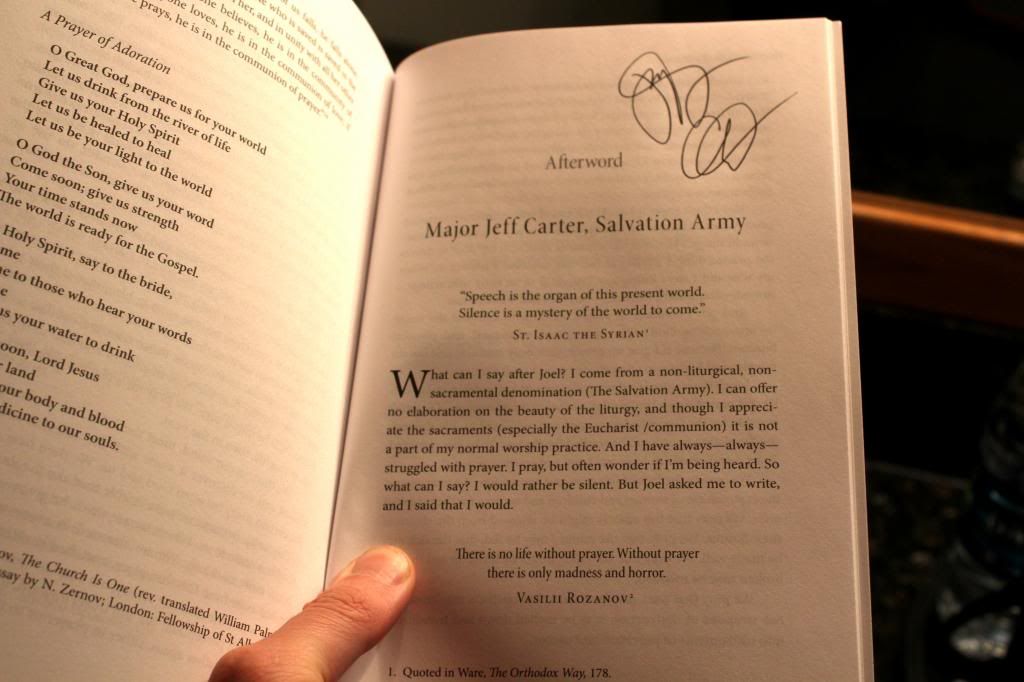
(It's not so weird. Joel asked me to write the afterward for the book...)
I'm in Norfolk, NE all this weekend for the book signing.

Biblical Limericks: Might Makes Right
If you can’t win as a debater
against Elymas, the sorcerer,
just curse him with blindness,
it’s really quite righteous…
a show of force will prove who’s better.
Acts 13: 6 - 12
(Thanks to Robert Cargill whose tweets yesterday afternoon inspired this one.)
Acts 13:6-12. For when magically striking your debate opponent blind is the only way to convince others that your argument is best.
— Dr. Robert R Cargill (@xkv8r) April 24, 2014
Thursday, April 24, 2014
My Wife
She doesn't like to have pictures taken of her. She turns away from the camera or scowls to discourage me. But, she needed a new headshot for official type things - and the last one we had taken still had captain's trim on the uniform. Here's my lovely wife. (and if I don't post tomorrow, you'll know it's because she's beaten me for posting this one...)


Biblical Limericks: That May Be Taking It out of Context…
Management can be dense, can be thick;
it’s as if their heads are filled with bricks.
The bible, it speaks true
when it says unto you:
It is hard to kick against the pricks.
Acts 26:14 (KJV)
Where Should a New Believer Begin? - Dr. Drusba Responds
Dear Dr. Drusba
I am a new Christian. I have read very little of the bible. I want to understand what it says for me and my life, but where should I begin?
Slightly Overwhelmed
Tulsa, OK
Dear Overwhelmed,
You are right to feel a bit overwhelmed. The bible is a big book, and some of it is very confusing. But I am pleased to hear that you are eager to understand the scriptures.
I am often asked this question. “Where should new believers start?” People often make the mistake of trying to read the bible like other books – that is, starting at the beginning and reading straight through to the end – from Genesis to Revelation. People who do this usually begin with a good deal of interest, but often get bogged down in the seemingly endless genealogies. So I don’t usually recommend that people begin with Genesis.
And don’t start with Revelation either, for obvious reasons.
Leviticus through Deuteronomy will provide very little that is immediately applicable to the new believer, so set those aside for now.
The gospels would seem like a good place to begin – but appearances can be deceiving. The gospel of John (often recommended to new believers) is filled with long esoteric discourses that are difficult to understand. Mark’s gospel is abrupt and lacks a proper account of the Resurrection (and that is very important.) Luke’s two part work Luke / Acts is good, but perhaps too radical for new believers. And Matthew’s gospel is so rooted in the prophecies of the Old Testament that it is all but impossible to understand without a thorough understanding of the prophets.
So should one begin with the prophets? By no means! They are, by turns, abrasive, disturbing, demanding and obscure. Don’t bother with the prophets until you’ve matured a little.
The letters of Paul are complex rhetorical arguments - again too complex for the new believer with little background in the scriptures.
How about the other epistles of the New Testament then? Hebrews? – requires an extensive understanding of the types and shadows as used in the Old Testament. James? Too polemic. Jude? May cause confusion in the new believer with its use of non-canonical material.
The Proverbs are good – but many of them seem to be contradictory. It’s best for the new Christian to not start there, as we want to affirm the absolute unity of the Scriptures.
Psalms? Yes, well some of them are quite lovely. But a close reading will reveal that many of them are quite dark and disturbing. This may not be a good place to begin for someone whose faith has only just begun.
Esther? Doesn’t mention God. I’m not even sure why it’s included. Song of Solomon? What? Are you some kind of prevert?
How about the historical books? Samuel, Kings and Chronicles? There again you have a dull recitation of names and dates. And it can be rather confusing trying to keep track of those overlapping kings and who was on the throne when and who invaded whom on that date… No. It’s best to leave those books aside for now.
Job? Ecclesiastes? Of course not. We’re trying to encourage the new believer.
Joshua and Judges have always been a gold mine for Sunday school lessons – but there again we run into the problem that without proper instruction these books will appear very dark, and violent, and brutal.
I am a new Christian. I have read very little of the bible. I want to understand what it says for me and my life, but where should I begin?
Slightly Overwhelmed
Tulsa, OK
Dear Overwhelmed,
You are right to feel a bit overwhelmed. The bible is a big book, and some of it is very confusing. But I am pleased to hear that you are eager to understand the scriptures.
I am often asked this question. “Where should new believers start?” People often make the mistake of trying to read the bible like other books – that is, starting at the beginning and reading straight through to the end – from Genesis to Revelation. People who do this usually begin with a good deal of interest, but often get bogged down in the seemingly endless genealogies. So I don’t usually recommend that people begin with Genesis.
And don’t start with Revelation either, for obvious reasons.
Leviticus through Deuteronomy will provide very little that is immediately applicable to the new believer, so set those aside for now.
The gospels would seem like a good place to begin – but appearances can be deceiving. The gospel of John (often recommended to new believers) is filled with long esoteric discourses that are difficult to understand. Mark’s gospel is abrupt and lacks a proper account of the Resurrection (and that is very important.) Luke’s two part work Luke / Acts is good, but perhaps too radical for new believers. And Matthew’s gospel is so rooted in the prophecies of the Old Testament that it is all but impossible to understand without a thorough understanding of the prophets.
So should one begin with the prophets? By no means! They are, by turns, abrasive, disturbing, demanding and obscure. Don’t bother with the prophets until you’ve matured a little.
The letters of Paul are complex rhetorical arguments - again too complex for the new believer with little background in the scriptures.
How about the other epistles of the New Testament then? Hebrews? – requires an extensive understanding of the types and shadows as used in the Old Testament. James? Too polemic. Jude? May cause confusion in the new believer with its use of non-canonical material.
The Proverbs are good – but many of them seem to be contradictory. It’s best for the new Christian to not start there, as we want to affirm the absolute unity of the Scriptures.
Psalms? Yes, well some of them are quite lovely. But a close reading will reveal that many of them are quite dark and disturbing. This may not be a good place to begin for someone whose faith has only just begun.
Esther? Doesn’t mention God. I’m not even sure why it’s included. Song of Solomon? What? Are you some kind of prevert?
How about the historical books? Samuel, Kings and Chronicles? There again you have a dull recitation of names and dates. And it can be rather confusing trying to keep track of those overlapping kings and who was on the throne when and who invaded whom on that date… No. It’s best to leave those books aside for now.
Job? Ecclesiastes? Of course not. We’re trying to encourage the new believer.
Joshua and Judges have always been a gold mine for Sunday school lessons – but there again we run into the problem that without proper instruction these books will appear very dark, and violent, and brutal.
When people ask me, “Dr.
Drusba, what part of the bible is best for new believers to read?” I tell them that they should instead read my
12 page pamphlet entitled: What the Bible
Says for You. It will give you all
that you'll really ever need. I have included a free copy for you. Enjoy it, and may God bless you as you study his word.
Green Shrubs
It's been raining here the past couple of days. Maybe even starting to look like spring.
Green Shrubs by Jeff Carter on 500px

Green Shrubs by Jeff Carter on 500px

Wednesday, April 23, 2014
Biblical Limericks: That Leaves a Bad Taste in the Mouth
Rab-shakeh had bad news to transmit
and in the common tongue he spoke it:
Assyria’s coming,
soon you’ll be succumbing;
you’ll drink your own piss and eat your shit.
II Kings 18: 26 – 27 (KJV)
Psalm 91 – A Charm against The Demon Resheph
Our weekly bible study group met this afternoon to read and wrestle with Psalm 91. We may have come out of it with our hips out of joint, but the wrestling itself is good spiritual exercise.
And this is a psalm to wrestle with (or to wrestle against). It is a strange one – and it gets stranger the more closely we examine it. It is very far removed from our modern / post-modern scientific rationalism. It was written in a time when demons and creatures of the night ruled the darkness – when illness was an entity to be feared. Psalm 91 seems to be a charm against these principalities, powers, and rulers of darkness[i]; it is a “liturgy against disease produced by the attacks of evil spirits (McCullough, 493).”[ii] This psalm is described by the rabbinical writers as a “song against evil occurrences” or “the song against plagues.”[iii] And is still read in some Jewish traditions during the stops of funeral processions as a way of warding off harmful spirits.
Though he isn’t mentioned specifically, it seems to be the Canaanite chthonic god, Resheph, “lord of battle and diseases, which he spreads through his bow and arrows" (Xella, 701)[iv] that Psalm 91 has in mind. The faithful of God is promised protection against the “terror of the night and the arrows that fly by day,” the poisoned pestilential arrows of the demonic deity Resheph.
Resheph appears elsewhere in the bible – though as a personification of those natural forces, as a diminished deity now in forced subservience to Yahweh.
In Deuteronomy 32: 23 - 24 Yahweh says: I will heap mischiefs upon them; I will spend mine arrows upon them. They shall be burnt with hunger, and devoured with burning heat, and with bitter destruction: I will also send the teeth of beasts upon them, with the poison of serpents of the dust. (KJV) Resheph (here translated as “burning heat”) is one of the arrows of disaster fired by Yahweh.
In Psalm 78:48 - He gave up their cattle also to the hail, and their flocks to hot thunderbolts. (KJV) Resheph here is the flaming “thunderbolts.”
In the bible Resheph is often seen company with other demonic forces such as Qeteb “the destroyer” (he is there in Deuteronomy 32 as “bitter destruction”) and Deber “the pestilence” (he is the “plague that prowls in the dark” of Psalm 91: 6). The prophet Habakkuk sees Yahweh going off to war with Deber going before him and Resheph following after - Before him went the pestilence, and burning coals went forth at his feet. Habakkuk 3:5 (KJV)
Plague, pestilence, burning arrows of fever and death. These were the terrors of the night – the plague prowling in the gloom and the scourge stalking at noon. These demonic forces caused a thousand to fall on one side, and ten thousand at the other side of Yahweh’s faithful.
But the faithful himself would not need to worry. He would live to see the bloated rotting bodies of his enemies (91: 8) but no plague would approach his tent because he knew and acknowledged the name of God, and trusted Yahweh to be his stronghold.
I've written on Psalm 91 before:
Qeteb
By the Speaking of this Charm
Can We Find that Secret Place of the Most High?
[i] Ephesians
6:12
[ii] McCullough,
W. Stewart, “Psalms: Exegesis” in Psalms; Proverbs vol. IV of the Interpreter’s
Bible, Abingdon Press, Nashville, TN, 1955.
[iii] Talmud,
Shevu’oth 15b
[iv]
Xella, Paolo, “Resheph” in The Dictionary of Deities and Demons in the Bible,
William B. Eerdman’s Publishing Company, Grand Rapids, MI 1999.
Biblical Limericks: There Once Was a Gal from Magdala
There once was a gal from Magdala
whose life was anything but gala,
she had seven demons
till Jesus brought reason,
casting them from her amygdala.
Luke 8: 2, Mark 16:9
What I’m Reading: The Hunchback of Notre-Dame
The Hunchback of Notre-Dame by Victor Hugo would be better called
by its French title – Notre-Dame de
Paris. While Quasimodo, the
hunchback, is an important character, he is not the central character. The cathedral stands at the center of the story; everything
happens in or around it. The characters
of the story live and die in its shadow.
I first read Notre-Dame de Paris for an assignment in high school. My teacher discouraged me from it saying that it was too large a book (500 pages) and too complex. But I read it, and loved it despite her. And I have read it several times again since then. Yes, the characters are drawn large. And yes, the plot relies on some wildly implausible coincidences. But Hugo tells the story so well that we don’t mind.
I first read Notre-Dame de Paris for an assignment in high school. My teacher discouraged me from it saying that it was too large a book (500 pages) and too complex. But I read it, and loved it despite her. And I have read it several times again since then. Yes, the characters are drawn large. And yes, the plot relies on some wildly implausible coincidences. But Hugo tells the story so well that we don’t mind.
There is an almost
Manichaean emphasis on the contrast between dark and light in this book. The darkened soul of the priest, Claude
Frollo, seeks illumination in his alchemical texts. The bright and beautiful young man, Captain Phoebus
(whose name comes from the Greek god of the sun), is utterly unenlightened and
doesn’t care. Esmeralda is the embodiment of beauty and grace. Quasimodo is the incarnation of every grotesque
human deformity. And fate (another
important theme of the novel) brings them together in the eponymous
cathedral.
Notre-Dame de Paris isn’t as ‘political’ as his other famous work Les Miserable, but the same pathos is evident here. Hugo shows us a detailed portrait of the life and customs and of fifteenth-century Paris. In fact, his research delayed the publication of the book. Several of the characters are based upon real people he discovered during his research including, perhaps, Quasimodo.
Notre-Dame de Paris isn’t as ‘political’ as his other famous work Les Miserable, but the same pathos is evident here. Hugo shows us a detailed portrait of the life and customs and of fifteenth-century Paris. In fact, his research delayed the publication of the book. Several of the characters are based upon real people he discovered during his research including, perhaps, Quasimodo.
If you’ve only ever
seen the movie versions of The Hunchback
of Notre Dame (particularly the Disney version…shudder…) you should forget what you’ve seen and read the
book.
Tuesday, April 22, 2014
Monday, April 21, 2014
Powerpoint Slides for Everyone - 2014 - Week 18
So each week I do this. I create a new background image for use in Powerpoint (or another similar presentation program) and I share it here. You are free to use it in your own projects (with or without powerpoint...) at home, work, school, or church. Use it however you like. I only ask that you share it freely and that you tell others that you found it here.
This week's image is of a Rand McNally World Globe that I found in one of our church closets. McNally apparently does not (or at least DID not) date their globes. But, based on the fact that Egypt (but not Syria) is listed as the "United Arab Republic" I would guess that it's from c.1962-65.

This week's image is of a Rand McNally World Globe that I found in one of our church closets. McNally apparently does not (or at least DID not) date their globes. But, based on the fact that Egypt (but not Syria) is listed as the "United Arab Republic" I would guess that it's from c.1962-65.

Biblical Limericks: This Is a Hard Teaching…
There were some who were prepared to thresh
him for the strange things he did profess.
Was he right in his head?
Was he ill when he said,
“You must drink my blood and eat my flesh”?
John 6: 53 - 61
Sunday, April 20, 2014
An Afternoon of Reading
I spent this very enjoyable Resurrection Sunday afternoon reading from Robin Griffith-Jones book The Four Witnesses: The Rebel, The Rabbi, The Chronicler, and They Mystic (HarperCollins, 2000). The sun was shining. birds were singing. The Lord is risen.
An Inaccessible Resurrection
The claim is sometimes made that the bible cannot be trusted, that the gospel stories of Jesus were just that – stories – stories created and told and retold and exaggerated and expanded by the leaders of the early church. The claim is even sometimes made that the person –Jesus of Nazareth – never actually existed in history. After all, we have no archaeological evidence that he existed, he left no writings, founded no school, never met with emperors or kings. The allegation is that the early Christians created him from bits and pieces of the stories told about other legendary figures and their tales of heroic exploits.
These claims are not generally acknowledged by scholars. Even those who are critical of the Christian faith generally accept that Jesus of Nazareth was a historical person – that he lived and preached and taught in the region of Galilee - that he drew crowds of followers and disciples who followed him – that he was believed to have done strange and miraculous deeds (even those who may not believe that he did miracles, will concede that he was believed to have done them) – that he went to Jerusalem – where he was arrested – and executed by the Roman authorities. But this is about as far as the historians can take us. The tomb and the resurrection itself are not accessible to us.
During Good Friday services we often sing the old spiritual “Were You there when They Crucified My Lord?” And, using our imaginations and the gospel accounts we can, in some sense, put ourselves there as they crucified our Lord, as they nailed him to the tree… and it causes us to tremble, tremble, tremble. We can in our minds hear the groans and screams of the dying men, the wailing of the women, the jeers and taunts of the crowd. We can feel the wind, and the descending cool as the darkness falls upon the land. We can imagine the weight of his body as he is taken down from the cross and laid into the tomb. But when they ask “Were you there when he rose up from the grave?” the answer has to be, “No.”
No one was there. No one saw it. There were no observers, no eyewitnesses. And even the testimony of the gospels that we have of the events after the resurrection is not without contradiction and conflicted accounts. Were there two women, or five, or more? Were there soldiers or not? Was there an angel or not? Were there two angels?
And the resurrection event is not a repeatable event. It cannot be recreated in a scientific laboratory. Those stories of people who have died for a period of time, their hearts have stopped beating, but with skill and modern technology doctor have been able to bring them back from death – this is not a resurrection. This is a resuscitation. Those who have brought back from death in this manner go back to the same sort of life they had before. They still have the same body and they will eventually die again.
Resurrection is a different kind of event. When Jesus came up from the tomb it was not a mere resuscitation. He may have had the same body – marked with the nail prints in his hands and feet, and the spear gash in his side – but his body was changed. It was different. He died once for death, and then no more. Death would never again touch that body.
So there is no historical evidence of the resurrection. There is no eyewitness testimony. And even the circumstantial evidence has its problems (contradictions and conflicting accounts…). The resurrection cannot be repeated or recreated in a scientific laboratory or hospital operating room. The resurrection is inaccessible to us. If someone were to say to us “prove that Jesus was resurrected on that Sunday morning!” we will have to admit that we cannot. It is like the hymn says of God, “in light inaccessible, hid from our eyes.”
Yet this is not said to dismiss, denigrate, or discredit the resurrection of Jesus. It is the central tenant of our faith. As the apostle Paul said, ‘if he wasn’t raised, then thing whole this is wasted air…’
The resurrection is inaccessible to us…except by faith.
And I believe it. I receive it with great joy, and, like those
who went to the tomb that morning, with some fear. Fear – because we like certainty. We want to be able to show cause. We like Newtonian physics where cause and
effect, motion and force, and direction and speed can be worked out with mathematical
precision. We would like to be able to
do this with the resurrection. It is,
after all the central point of our faith!
But we cannot. It exists as an
event beyond the realm of space and time and scientific certainty.
It’s not a song that I’ve ever really appreciated (honestly, I think it overly schmaltzy…) – it was one of those songs that the ‘old people’ of the church always wanted to sing. But it captures something of this:
I serve a risen Savior
It’s not a song that I’ve ever really appreciated (honestly, I think it overly schmaltzy…) – it was one of those songs that the ‘old people’ of the church always wanted to sing. But it captures something of this:
I serve a risen Savior
He’s in the world
today.
I know that He is
living,
Whatever men may say.
I see His hand of
mercy;
I hear His voice of
cheer;
And just the time I
need Him
He’s always near.
He’s always near.
He lives, He lives, Christ Jesus lives today!
He walks with me and talks with me along life’s narrow way.
He lives, He lives, salvation to impart!
You ask me how I know He lives?
He lives within my heart.
He lives within my heart.
I cannot prove it. I cannot show it. But I believe it, and I receive it with great
joy (even if that joy is mixed with some doubt and fear.) I can see how the resurrection event changed
the lives of those disciples who followed.
I can see how the resurrection motivated the early church. I can see how Christianity has been a force
for good in the world (even as I, with fear and trembling, admit that
Christianity has faltered and erred far too often…)
I can know and trust and receive this resurrection of Jesus – and the resurrection that he gives to each of us, this new life, this new full life, this new and eternal life – but only by faith. I cannot prove it. I cannot show it. We still get sick. We still endure hardship. We still die. The resurrection of Jesus (and that promised to us in him) isn’t visible or accessible to our eyes.
But we can receive it by faith – and receive it with great joy. He is risen! He is risen, indeed!
Saturday, April 19, 2014
An Atheist’s Jesus – The Gospel According to Saint Pasolini
One of the complaints of Darren Aronofsky’s film Noah that I saw bandied about the internets was that he is an atheist. How could an atheist make a religious movie? Or how dare he use one of our stories to make his Hollywood movie…
This argument I countered as often as I could without becoming obnoxious about it by pointing people to one of my favorite Jesus movies – one of the greatest Jesus movies ever made: The Gospel According to Saint Matthew (1964) written (though he stuck pretty much directly to the gospel of Matthew) and directed by avowed Atheist, Marxist, and Homosexual, Pier Paolo Pasolini. My praise of this movie cannot be overstated. I don’t care if he was an atheist – this is one of the greatest depictions of the gospel story ever made.
And maybe it’s partly because he was an atheist that the film is so good.
Pasolini confined himself to the gospel of Matthew – the dialogue of the film is strictly the gospel of Matthew. No material has been added from the other three gospels. Neither was material created to bridge scenes. Pasolini did edit a few scenes out – notably lacking is the Transfiguration - and rearranged the order of a few of the stories… But this Jesus story is not an amalgamation of the four gospels. It is just Matthew.
And there is no syrupy sentimentalism here either. The music is minimal but eclectic – drawing from “high art” classical (Bach and Prokofiev) to “low art” Spirituals (Sometimes I Feel like a Motherless Child) and Blues and what sounds like Latin and African folk music. The costuming is eclectic as well – looking like a cross between first century Middle East and a Renaissance painting by Piero della Francesca. There are long scenes with no spoken dialogue, where the wind is the only voice. Though filmed in Italy it conveys a sense of the rugged Israel landscape (and, in fact, was filmed in the same area that Mel Gibson would later film his The Passion of the Christ). There are no big budget special effects miracles. The miracles happen, but they are quiet and unobtrusive. When the angels appear to deliver their news, or when Satan appears to tempt Jesus, it is without fanfare or the lights and glories of heaven. It is simple. It is small.
Pasolini filmed the
movie in an Italian Neorealism style – using many untrained and unprofessional
actors. He used real peasants and
shopkeepers with their bad teeth and wrinkled faces, and bald heads. His Jesus was untrained and unknown 19 year
old Enrique Irazoqui – and with that unibrow he will never be confused with Son of God “sexy Jesus.” The actors (such as they were)
stumble occasionally over their lines – but the people are infused with such nobility
that it is hard to sneer at them or to see this as a flaw in the movie. Their humble stature elevates the film.
Pasolini’s Jesus is both affable without becoming the “Buddy Christ” of Dogma (1999) and authoritative without becoming the weird unblinking Jesus of Nazareth (1977). He exhibits a fierce compassion – loving and tender towards the children, the poor, the oppressed, and the outcast – while stridently, passionately, ardently speaking against those in power, both religious and political.
The film cuts away from the crucifixion to a black screen (perhaps for the darkness that covered the land) and presents a challenge to the audience, jumping back to the words of Jesus in chapter 13 of Matthew’s gospel (which is , in turn, jumping back to the prophet Isaiah…)
“By hearing ye shall hear, and shall not understand; and seeing ye shall see, and shall not perceive:
For this people's heart is waxed gross, and their ears are dull of
hearing, and their eyes they have closed; lest at any time they should see with
their eyes and hear with their ears, and should understand with their heart,
and should be converted, and I should heal them.”
If you have never seen
this movie, take the time to do so.
A Pastor on Holy Saturday
It is hard to observe the silence
that this day demands,
to experience the tension
and release
as Black Saturday falls
and Resurrection Sunday dawns
I am setting the chapel
and preparing the sermon,
already anticipating
tomorrow’s shouts of joy.
How can I celebrate the resurrection tomorrow
if I have not died with him today?
Let All Mortal Flesh Keep Silent - Music for the Great Sabbath
Download it here if you like.
I used the following sounds from the Freesound Project:
Synthe grave sourd
Coyote from the front door
Raven calls
Cheap flute
Lobby with laughter
Friday, April 18, 2014
I Shall Be Released
With a few very slight modifications, Bob Dylan's song I Shall Be Released (1967) is an appropriate song for Good Friday.
They say everything can be replaced,
yet every distance is not near,
so I forgive every face
of every man who put me here.
I see my light come shining
from the west unto the east.
Any day now, any day now,
I shall be released.
They say every man needs protection
they say every man must fall.
I swear I see my reflection
someplace high above this wall.
Hanging next to me on this lonely hill
is a man who swears he's not to blame.
All day long I hear him shout so loud,
crying out that he was framed.
They say everything can be replaced,
yet every distance is not near,
so I forgive every face
of every man who put me here.
I see my light come shining
from the west unto the east.
Any day now, any day now,
I shall be released.
They say every man needs protection
they say every man must fall.
I swear I see my reflection
someplace high above this wall.
Hanging next to me on this lonely hill
is a man who swears he's not to blame.
All day long I hear him shout so loud,
crying out that he was framed.
The Stations of the Cross - Readings and Prayers
Short readings and prayers for the traditional stations of the cross.
I freely admit that the reading for #3 - Jesus Falls the First Time - was developed from the REM song Talk About the Passion
I freely admit that the reading for #3 - Jesus Falls the First Time - was developed from the REM song Talk About the Passion
Thursday, April 17, 2014
A Christian Passover – Hopefully Something More than an Exercise in Self-Justification
I fully realize that this may be an exercise in self-justification. I recognize that, but it’s where I’m at, at least for now.
For several years now I have lead my congregations in a Passover dinner – connecting it to the last supper of Jesus with his disciples. I’ve shared the Haggadah that I’ve cobbled together (and continue to tinker with). I have even made my own matzoh a couple of times. And I have found the practice to be very rewarding, spiritually and educationally. And my church people have appreciated it too. They have experienced new foods, new customs and new traditions that help them to better understand their own faith, and to better understand the faith of their Jewish brothers and sisters.
(And yes- I do recognize that the gospels are not clear that the Last Supper was a Passover dinner, and that the Seder traditions that exist today were developed well after the time of Jesus. I make these caveats known to my people.)
But earlier this week Theoblogy blogger Tony Jones shared Five Reasons You Probably Shouldn't Attend a Christian Seder. This post troubled me a great deal. Of his five points, it was number five that nagged at me.
5) How would you feel if a rabbi or imam performed a mock baptism?
That’d be pretty weird, right? That’s pretty much how it is when Christians
take a practice that is central to Judaism and attempt to recreate it with
Christian meaning. Virtually every Jew I’ve ever asked about this finds the
practice offensive.
Here, and here, and here, and here are a couple more articles posted on line that debate the issue back and forth. Some rabbis say “sure, it’s fine” other say “no, absolutely not” others are somewhat ambivalent.
Here, and here, and here, and here are a couple more articles posted on line that debate the issue back and forth. Some rabbis say “sure, it’s fine” other say “no, absolutely not” others are somewhat ambivalent.
I take seriously the concern that a Christian Seder could be understood as a
form of cultural appropriation, and as offensive. I don’t want to do that. That has never been
my intent. There has been a terrible
long history of Christian offenses against our Jewish brothers and
sisters. I do not wish to continue
that. I don’t want this to be a “mock” Passover – to
ridicule or denigrate the faith and customs of anyone.
However I have chosen to continue with our plans to host a Passover /last supper dinner with my congregation tonight (fully recognizing that my Jewish friends celebrated the official Passover dinner Monday night) for the following reasons:
1) I believe in a continuity between the Hebrew bible /Old Testament and the New Testament.
2) The earliest Christians were Jewish; they did not consider themselves converts to a new/different religion and it seems very likely that they would have continued to celebrate the Passover and would have invited their gentile brothers and sisters to join them.
3) Religious borrowing is not a new thing – and not exclusively a Christian thing. Psalm 29 seems to be a “Yawhistic adaption of an older Canaanite hymn to the storm-god Baal, (Dahood, 175).”[i] Proverbs 10 - 22:16 includes much material that is directly borrowed from an Egyptian source - The Instructions of Amenemopet. And Paul (a Jew’s Jew, if there ever was one) ‘appropriated’ the statue “to an unknown god” at the Areopagus (Acts 17: 22 – 31).
4) While recently in Israel, I was invited to pray at the western wall in Jerusalem - even if I was praying to God with an altogether different understanding, and offering my prayers in “Jesus’ name…”
So this is where I am –at least for now. I have shredded the horseradish for the maror; I have mixed the haroset; I’ve set the tables with the nice dishes, and laid out the Haggadah books. In a few moments I’ll go back to the kitchen to finish a few more preparations before this evening’s celebration. But my thoughts on this issue are not finished. Whether or not I will do this again next year is not yet clear.
Next year in Jerusalem...maybe...
*However I have chosen to continue with our plans to host a Passover /last supper dinner with my congregation tonight (fully recognizing that my Jewish friends celebrated the official Passover dinner Monday night) for the following reasons:
1) I believe in a continuity between the Hebrew bible /Old Testament and the New Testament.
2) The earliest Christians were Jewish; they did not consider themselves converts to a new/different religion and it seems very likely that they would have continued to celebrate the Passover and would have invited their gentile brothers and sisters to join them.
3) Religious borrowing is not a new thing – and not exclusively a Christian thing. Psalm 29 seems to be a “Yawhistic adaption of an older Canaanite hymn to the storm-god Baal, (Dahood, 175).”[i] Proverbs 10 - 22:16 includes much material that is directly borrowed from an Egyptian source - The Instructions of Amenemopet. And Paul (a Jew’s Jew, if there ever was one) ‘appropriated’ the statue “to an unknown god” at the Areopagus (Acts 17: 22 – 31).
4) While recently in Israel, I was invited to pray at the western wall in Jerusalem - even if I was praying to God with an altogether different understanding, and offering my prayers in “Jesus’ name…”
So this is where I am –at least for now. I have shredded the horseradish for the maror; I have mixed the haroset; I’ve set the tables with the nice dishes, and laid out the Haggadah books. In a few moments I’ll go back to the kitchen to finish a few more preparations before this evening’s celebration. But my thoughts on this issue are not finished. Whether or not I will do this again next year is not yet clear.
Next year in Jerusalem...maybe...
(EDITED slightly - to qualify point number 2 a little and to add the Egyptian proverbs to point number 3)
[i]
Dahood, Mitchell Psalms 1 – 50 Introduction, Translation, and Notes
Doubleday & Company, Inc, Garden City NY, 1966.
Wednesday, April 16, 2014
Psalm 22 and the Death of Jesus
Psalm 22 is among my
favorite psalms, and I don’t say that lightly.
I am annoyed by people who tell me that that they love to read the psalms
because they’re soooo encouraging and
uplifting. I really have to wonder what
collection of psalms these people are reading.
Some of the psalms in our bible – many of the psalms in our scripture
are ugly, fierce, and dark. Many of them
are quite troubling. And some of them,
let’s be honest, are a bit dull. (Psalm
119, I’m looking at you…)So when I find a psalm that I like, I really like
it. And I like Psalm 22.
It is a powerful work. From a literary viewpoint it is a marvel of poetic expression. From an emotional viewpoint it is a perceptive and accurate expression of those emotions we usually bottle up and hide from public display. From a religious view it is a profound expression of faith in the face of adversities of life. Psalm 22, in my opinion is just about perfect.
It divides neatly into two parts – 1) and individual’s lament and 2) a corporate expression of praise. Though it is described as “a psalm of David” there is nothing in it that connects specifically to any event in David’s life (at least as recorded in the scriptures…) and it isn’t necessary to posit a Davidic authorship to understand it. (In fact it’s probably easier to understand without getting it all mixed up with David.)
It is a powerful work. From a literary viewpoint it is a marvel of poetic expression. From an emotional viewpoint it is a perceptive and accurate expression of those emotions we usually bottle up and hide from public display. From a religious view it is a profound expression of faith in the face of adversities of life. Psalm 22, in my opinion is just about perfect.
It divides neatly into two parts – 1) and individual’s lament and 2) a corporate expression of praise. Though it is described as “a psalm of David” there is nothing in it that connects specifically to any event in David’s life (at least as recorded in the scriptures…) and it isn’t necessary to posit a Davidic authorship to understand it. (In fact it’s probably easier to understand without getting it all mixed up with David.)
Some have suggested
that the two parts (which don’t have any real connecting material between them)
were written by two different authors. Others
have suggested that they were written by the same author at different times,
and, of course, some maintain that the two parts were written by the same
person at the same time. Who’s to
say?
The first part – the individual’s lament is a bit bi-polar (though I don’t mean that in a clinical way). It swings (wildly, perhaps) between expressions of utter despair and misery and desperate expressions of hope in God. I (vs. 1 – 2) You [God] (vs. 3 – 5) I (6 – 8) You (9 – 11) I (12 – 18) You (19 – 21 or 22 depending on how one translates vs. 22) These are some serious mood swings. The psalmist is enduring the worst sort of pain (physical is indicated, but it’s mostly mental, emotional, spiritual anguish…) and he (or she) is desperate for God’s attention and for God’s redemptive strength…. But God does not appear to be listening, or if he is, he’s not answering.
Humanity is all but lost in the pain of this psalm. The psalmist is a worm, not a man (6). His enemies are bulls (12), lions (13, 21) dogs (16), and wild oxen (21) (or, as in the KJV, unicorns!). They have already encircled him, trapped him. He’s not dead yet, but he might as well be; they’re already dividing up his possessions among themselves (18).
And the psalmist cries out for the same sort of salvation that God has provided in the past. He saved and rescued our ancestors in the past – and unless he saves and rescues the psalmist now, there is only death and disgrace. Save me, he says, “that I might proclaim your name to my brethren, [and] in the midst of the congregation praise you,” – as Mitchell Dahood translates vs. 22 in the Anchor Bible [i]
The first part – the individual’s lament is a bit bi-polar (though I don’t mean that in a clinical way). It swings (wildly, perhaps) between expressions of utter despair and misery and desperate expressions of hope in God. I (vs. 1 – 2) You [God] (vs. 3 – 5) I (6 – 8) You (9 – 11) I (12 – 18) You (19 – 21 or 22 depending on how one translates vs. 22) These are some serious mood swings. The psalmist is enduring the worst sort of pain (physical is indicated, but it’s mostly mental, emotional, spiritual anguish…) and he (or she) is desperate for God’s attention and for God’s redemptive strength…. But God does not appear to be listening, or if he is, he’s not answering.
Humanity is all but lost in the pain of this psalm. The psalmist is a worm, not a man (6). His enemies are bulls (12), lions (13, 21) dogs (16), and wild oxen (21) (or, as in the KJV, unicorns!). They have already encircled him, trapped him. He’s not dead yet, but he might as well be; they’re already dividing up his possessions among themselves (18).
And the psalmist cries out for the same sort of salvation that God has provided in the past. He saved and rescued our ancestors in the past – and unless he saves and rescues the psalmist now, there is only death and disgrace. Save me, he says, “that I might proclaim your name to my brethren, [and] in the midst of the congregation praise you,” – as Mitchell Dahood translates vs. 22 in the Anchor Bible [i]
The second part of the
psalm moves suddenly- without transition – from an individual’s lament to a
corporate, communal expression of joy and praise. The psalmist encourages those present to
worship and praise God because he does hear and does answer the prayers of the
afflicted. (Which is why I think that the
two parts were written by the same person - either at different times, or at
the same time but after a long period of reflection.)
And there is an ever
expanding sphere of joy and worship in this part of the psalm; it grows from
the those present in the assembly, to all of Israel, to all the families of the
Nations (that is the gentiles) – to even the dead who’ve gone down into the
netherworld, and larger still – to those who are not yet born.
This idea that the dead will praise God is an interesting divergence from other parts of the Hebrew bible / Old Testament. Usually it is thought that the dead do not praise God, don’t do much of anything really. “It is not the dead who praise the LORD, those who go down to the place of silence” Psalm 115:17
This idea that the dead will praise God is an interesting divergence from other parts of the Hebrew bible / Old Testament. Usually it is thought that the dead do not praise God, don’t do much of anything really. “It is not the dead who praise the LORD, those who go down to the place of silence” Psalm 115:17
There isn’t much middle
ground in this psalm. It swings from the
worst possible human misery to the exalted heights of praise in one verse. But that only heightens the contrast between
the two parts.
Psalm 22 becomes especially important for the Christian during this week – holy week – as it comes into play in the gospel accounts of Jesus’ crucifixion. But there are wildly divergent understandings of how psalm 22 is related to the crucifixion.
Some treat the psalm as a predictive psalm. Ray C. Stedman’s description of this psalm is representative of the way that I have heard many other Christians talk about psalm 22.
Psalm 22 becomes especially important for the Christian during this week – holy week – as it comes into play in the gospel accounts of Jesus’ crucifixion. But there are wildly divergent understandings of how psalm 22 is related to the crucifixion.
Some treat the psalm as a predictive psalm. Ray C. Stedman’s description of this psalm is representative of the way that I have heard many other Christians talk about psalm 22.
“In many ways the twenty-second Psalm is the most amazing of the psalms. In it we have a picture of the crucifixion and resurrection of the Lord Jesus, painted by David the psalmist one thousand years before Jesus Christ was born. It constitutes one of the most amazing predictions of all time.
“At least nine specific events or aspects of the Crucifixion are described here in minute detail. All of them were fulfilled during the six hours in which Jesus hung on the cross… Moreover, the latter part of the psalm clearly depicts the resurrection of Jesus from the dead. The probability that the prediction of these nine events would be fulfilled by chance in one person, on one afternoon, is inconceivably small. The chance that all this could occur by accident is beyond any realm of possibility our minds could imagine. Yet it was all fulfilled as predicted in this psalm (Stedman, 65)[ii]” (emphasis added by me….)
In this view, Psalm 22 is just another part of the checklist of prophecies that Jesus had to fulfill in order to prove that he was who we claim that he is. And I think this really diminishes both the power of the psalm and the person of Jesus. If the psalm is predictive in this way, then Jesus’ cry from the cross, “My God why have you abandoned me?” becomes less an expression of despair and more of a going through the motions. After all, if he already knows that the psalm “clearly” predicts his resurrection, then where is the fear? Where is the overwhelming sense of abandonment? Where is his humanity?
And, I’m not sure that I should have to say it, but I will – it is not at all “clear” that there is a resurrection in mind in psalm 22. That is shoehorn theology.
At the other extreme
end of the spectrum are people like John Dominic Crossan who argues in his
book, Who Killed Jesus: Exposing the Roots of Anti-Semitism in the Gospel Story of the Death of Jesus that the
Gospel accounts of Jesus’ arrest, trial, abuse, crucifixion, and resurrection were
not actual historical events that have been colored in the gospel accounts by
reflection on Old Testament texts, but rather exegetical fabrications created
whole-cloth from those OT texts. In his
words, “The passion narratives are not history remembered but prophecy historicized.”[iii]
While I understand
(somewhat) how he gets to that conclusion, I don’t accept it. I remain in the middle somewhere, believing
that Jesus was crucified and buried and resurrected, but also that the gospel
writers were not eye witnesses to the events.
And may not have had access to precise courtroom style transcripts of
what occurred. Instead they told the story of his death and resurrection as a theological
story – using the scriptures as their template.
This allowed to be sparse and laconic in their description of the event –
but to cram huge amounts of context and meaning into the few details they
described. Did Jesus scream out “My God,
why have you abandoned me?” Did the
soldiers gamble for his clothes? Maybe
not – but in describing it this way, Jesus’ death is connected back to psalm 22
and there to a powerful expression of faith in the face of the worst of human
misery.
Without having to spell it out explicitly – his death is linked to the ever expanding joy of the disciples taking the good news from the assembly, to all of Israel, and to the nations at the ends of the earth.
[i]
Dahood, Mitchell, Psalms 1 – 50: Introduction, Translation and Notes,
Doubleday & Company, Inc, Garden City, NY, 1966.
[ii]
Stedman, Ray C. Folk Psalms of Faith, G/L Regal Books, Glendale, CA,
1973.
[iii] Crossan,
John Dominic, Who Killed Jesus: Exposing the Roots of Anti-Semitism in the
Gospel Story of the Death of
Jesus, Harper, San Francisco CA, 1995.
Biblical Limericks: A Votive for Judas
I know it’s just not done, but what if
for old Judas, we lit a votive?
Yes, he betrayed Jesus,
and that rightly grieves us,
but we don’t know Judas’ motive.
Mark 14: 10
Tuesday, April 15, 2014
Biblical Limericks: Dressed Better than Solomon
Jesus said ‘don’t worry what to wear;
just look at the lilies growing there -
they neither work nor spin
but see how God clothes them;
Father God will not let you go bare.'
Luke 12: 22 - 28
Faith in the Face of Empire – Where Are You, God?
I have been reading and blogging my way through Mitri Raheb’s book Faith in the Face of Empire: The Bible through Palestinian Eyes[i]. In the previous chapter Raheb asked four questions that help shape his hermeneutic – one of which was “Where are you, God?”
It is a question found repeated in various ways throughout the scriptures – in both the Hebrew Bible / Old Testament and the Christian New Testament as well. From the cries of the descendents of Abraham as they suffered under the slavery of Pharaoh in Egypt to Jesus’ cry of despair on the cross, “my God, my God, why have you abandoned me?” The question is a central question to faith in Palestine.
This is not to say that the questioner believes God to be non-existent or absent. The question, instead invites the hidden God to intervene.
Raheb contrasts the God of Palestine to the gods of Empire. The gods of empire are showy, loud, and visible in the shrines built by conquering armies in every new territory. The expanding reach of empire is a sign of their claim to omnipresence. Their victorious armies are a symbol of their omnipotence. But the God of Palestine is different. He was not found in huge expansive empires, but in a narrow tract of land with few natural resources. He was not loud and showy demanding shrines and temples in far flung corners – in fact he was somewhat resistant to having a temple built for him at all. The strength of the God of Palestine was not seen in conquering armies.
In fact, time and again, the people of this God were defeated and captured, and taken away into slavery and exile, where their captors asked the question again:
As with a deadly wound in my body,
my adversaries taunt me,
while they say to me continually,
“Where is your God?”
Psalm 42: 10 (NRSV)
What is uniquely
revealed of the God of Palestine is that he is always there – even in defeat
and despair and exile. He has not
fled. He has not abandoned his
people. He maintains solidarity with
them. Raheb finds this most fully
demonstrated in the crucifixion of Jesus – the God/Man - the high priest who is not unable to
sympathize with our weaknesses and struggles for he has endured them with us (Hebrews
4: 15) (Raheb, 87).
Those who have this God
with them are able to rebuild and restart again and again. Defeat at the hands of Empire is not an
ultimate defeat.
For Raheb, there is no critique of Empire without God. No other state, power, organization, or people group can help. Politicians bicker and argue, but only God comes to the help of his people. “Seeing God on the other side of the empire queries and challenges the morality of the empire, which is a key link in weakening it (Raheb, 85).”
For Raheb, there is no critique of Empire without God. No other state, power, organization, or people group can help. Politicians bicker and argue, but only God comes to the help of his people. “Seeing God on the other side of the empire queries and challenges the morality of the empire, which is a key link in weakening it (Raheb, 85).”
Chapter 1 – Longview of History
Chapter 2 – Dispelling the Myth of Judeo-Christian Tradition
Chapter 3 – The Geo-Politics of the Middle East
Chapter 4 – Omphaloskepsis
Chapter 5 - Seven Marks of the Empire
Chapter 6 – Four Questions
[i] Raheb,
Mitri, Faith in the Face of Empire: The Bible through Palestinian Eyes, Orbis
Books, Maryknoll, NY, 2014.
The Valley of the Cheese Makers

While we were in Jerusalem last month our tour guide made several references to "the valley of the Cheesemakers" (that is, the Tyropoeon Valley.) I tried very hard not to giggle. And was unsuccessful.
Every time she said it, I wanted to turn around and say "oh, shut up big nose...."
Biblical Limericks: Bloodmoon Hullabaloo
The Dispensationalists
will mine
Joel’s description of heavenly signs
with each lunar eclipse;
they will rewrite the scripts
and their predictions they’ll redefine.
Joel 2: 30 - 32
Joel’s description of heavenly signs
with each lunar eclipse;
they will rewrite the scripts
and their predictions they’ll redefine.
Joel 2: 30 - 32




